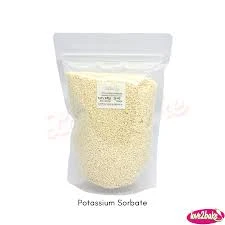
Exploring the Effects of Acetone on the Durability and Performance of Rubber Materials
The Interaction Between Acetone and Rubber Implications and Applications
Acetone, a simple organic compound with the formula (CH₃)₂CO, is an important solvent in various industries due to its ability to dissolve many substances. One of the materials that acetone interacts with is rubber, a versatile material found in countless applications, from tires to medical devices. Understanding the relationship between acetone and rubber is vital for industries that depend on rubber components.
The Nature of Rubber
Rubber is typically made from natural latex or synthetic polymers, with the latter becoming increasingly popular due to its versatility and cost-effectiveness. Common types of synthetic rubber include Styrene-Butadiene Rubber (SBR), Polybutadiene Rubber (BR), and Ethylene-Propylene-Diene Monomer (EPDM). The properties of rubber—such as elasticity, resilience, and durability—make it suitable for a wide range of applications.
However, the interaction between acetone and rubber can lead to significant changes in the physical properties of rubber materials. This interaction primarily involves swelling and degradation, which can impact the performance and lifespan of rubber products.
Acetone's Effect on Rubber
When rubber is exposed to acetone, several processes occur. One of the most notable effects is swelling, which occurs as acetone permeates the rubber matrix. The solvent disrupts the intermolecular forces that hold the polymer chains together, leading to an increase in volume. While this swelling can be reversible, prolonged exposure to acetone may result in irreversible changes such as hardening or cracking.
In particular, natural rubber shows a significant decrease in mechanical strength when exposed to acetone. This is critical for applications where rubber is employed in environments where acetone or acetone-based products are present, such as in automotive or manufacturing settings.
acetone and rubber

Industrial Implications
The interaction between acetone and rubber has significant implications for industries where rubber components are used. For instance, in automotive applications, the rubber seals and gaskets must resist exposure to solvents like acetone to maintain their integrity and performance. If a gasket deteriorates due to contact with such solvents, it can lead to leaks and system failures, affecting overall safety and functionality.
To mitigate the adverse effects of acetone, industries often employ rubber compounds that are specifically engineered to withstand solvents. These compounds may incorporate additives that enhance chemical resistance and maintain mechanical properties even when exposed to harsh environmental conditions.
Applications Leveraging the Acetone-Rubber Relationship
Despite the detrimental effects of acetone on rubber, the interaction can be beneficial in certain applications. Acetone's solvent properties are utilized in rubber processing, particularly during the manufacturing of rubber products. To create rubber adhesives or solvents, acetone can help to dissolve rubber compounds, making them easier to apply or to form specific shapes before they cure.
Moreover, the ability to dissolve or manipulate rubber through acetone opens doors for artistic and craft applications, where flexibility in molding and shaping rubber materials is essential.
Conclusion
The relationship between acetone and rubber is complex, characterized by both risks and opportunities. While acetone can have damaging effects on rubber's physical properties, leading to degradation in performance, it can also serve as a useful agent in the manufacturing and processing of rubber products. Understanding this interaction allows industries to design better materials and choose appropriate applications for rubber products that may encounter acetone. As technology advances, ongoing research will undoubtedly reveal more about optimizing rubber formulations to enhance their resilience against solvents like acetone, ensuring safety and efficiency across various industrial domains.
-
nitrile-rubber-honoring-strict-production-standardsNewsAug.22,2025
-
aspartame-ingredients-honoring-food-safety-valuesNewsAug.22,2025
-
fertilizer-for-balanced-plant-nutritionNewsAug.22,2025
-
cyanide-gold-processing-with-high-purity-additivesNewsAug.22,2025
-
formic-acid-in-textile-dyeing-applicationsNewsAug.22,2025
-
aluminum-hydroxide-gel-in-skincare-productsNewsAug.22,2025
-
Regulatory Compliance for Global Mining Chemicals UseNewsAug.12,2025
Hebei Tenger Chemical Technology Co., Ltd. focuses on the chemical industry and is committed to the export service of chemical raw materials.
-

view more DiethanolisopropanolamineIn the ever-growing field of chemical solutions, diethanolisopropanolamine (DEIPA) stands out as a versatile and important compound. Due to its unique chemical structure and properties, DEIPA is of interest to various industries including construction, personal care, and agriculture. -

view more TriisopropanolamineTriisopropanolamine (TIPA) alkanol amine substance, is a kind of alcohol amine compound with amino and alcohol hydroxyl, and because of its molecules contains both amino and hydroxyl. -

view more Tetramethyl Thiuram DisulfideTetramethyl thiuram disulfide, also known as TMTD, is a white to light-yellow powder with a distinct sulfur-like odor. It is soluble in organic solvents such as benzene, acetone, and ethyl acetate, making it highly versatile for use in different formulations. TMTD is known for its excellent vulcanization acceleration properties, which makes it a key ingredient in the production of rubber products. Additionally, it acts as an effective fungicide and bactericide, making it valuable in agricultural applications. Its high purity and stability ensure consistent performance, making it a preferred choice for manufacturers across various industries.





